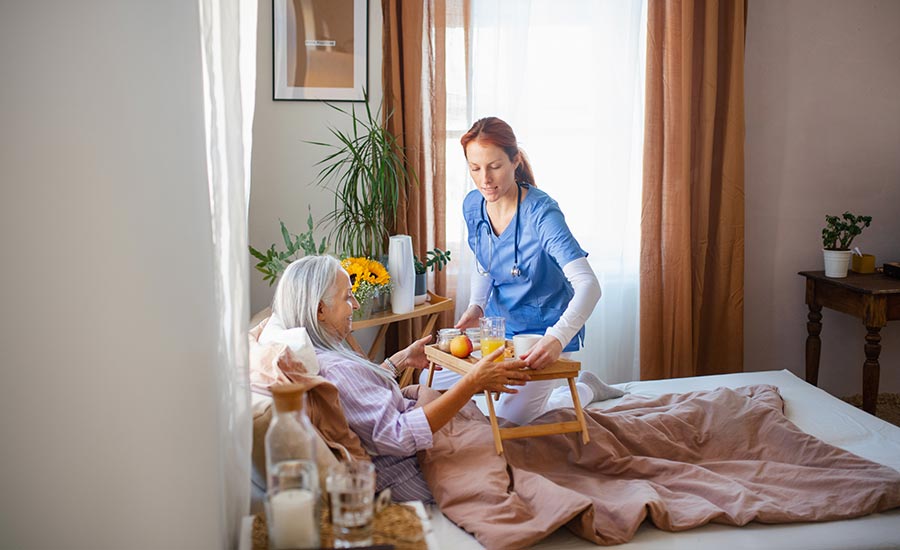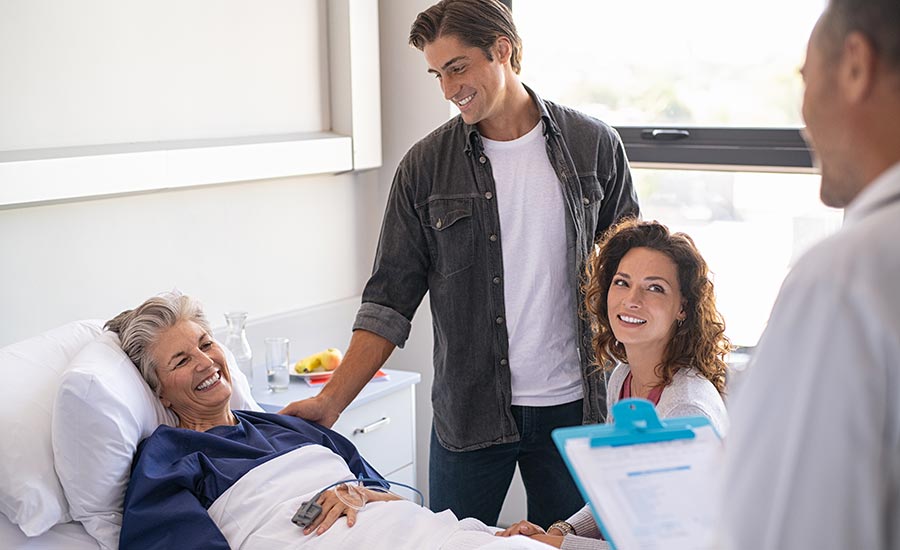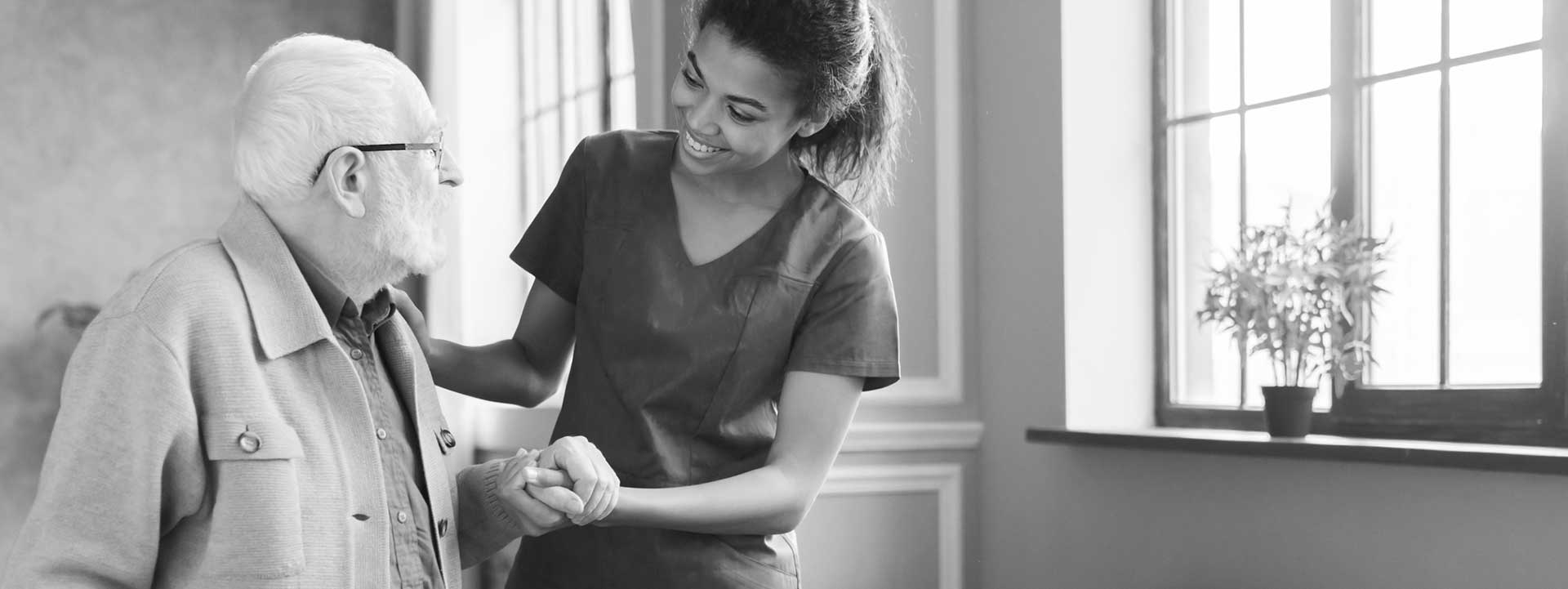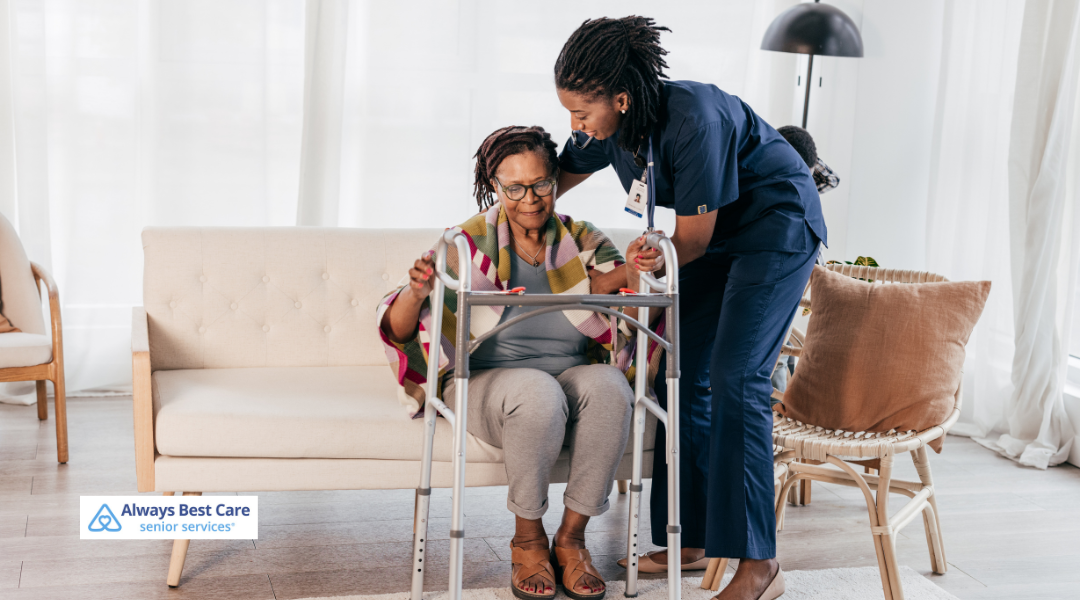A 101 Guide to Bedfast Care [How To Provide Comfort + FAQs]
![A 101 Guide to Bedfast Care [How To Provide Comfort + FAQs]](https://cdn.alwaysbestcare.com/wp-content/uploads/2025/03/bedfast-hero-image.jpg)
Table of Contents
Bedfast: Key Points
- A bedridden patient remains confined to bed due to illness, injury, or a severe medical condition
- The term “bedfast” is outdated as has been replaced by “bedridden”
- Bedridden describes someone who can’t leave their bed due to serious health conditions or disabilities, while chairfast refers to individuals with limited mobility who can still sit in a chair or wheelchair
Remember when you had the flu as a child and could barely gather the strength to get out of bed?
You toughed it out, and once you recovered, you returned to your usual self.
However, as people age, becoming bedbound or bedfast is no longer a temporary setback but a serious condition that requires ongoing care.
Unlike the flu, which passes with rest, prolonged immobility in seniors often leads to severe health complications and a decline in overall well-being.
This shift signals the need for significant caregiving support, adjustments to daily routines, and in many cases, professional medical assistance to preserve comfort, dignity, and quality of life.
If your elderly loved one is transitioning to home care after a hospital stay and will likely be bedfast, our guide will:
- Explain the differences among bedfast, bedridden, and chairfast
- Discuss the common causes of bedridden conditions
- Share essential tips for caring for a bedridden patient at home after hospitalization
- Provide in-home care services at Always Best Care
Bedfast vs. Bedridden vs. Chairfast
A bedfast patient is an individual confined to their bed due to illness or injury. A bedfast patient, who may be confined temporarily or long-term, requires significant assistance with daily activities.
Immobility can lead to different motor problems, including decreased bone mineral density, reduced muscle mass, and physical impairment.
Bedfast and bedridden both describe someone confined to bed due to illness, injury, or old age.
Generally, bedfast is an older, archaic term for bedridden.
On the other hand, chairfast refers to individuals with limited mobility who can still sit in a chair or wheelchair.

What Causes People To Become Bedridden?
People can become bedridden due to health issues or disabilities that severely limit their mobility.
- Chronic conditions: Late-stage cancer, end-stage renal disease, or severe pneumonia may require extended bed rest.
- Psychological factors: Severe depression or anxiety can physically debilitate a person. For example, depression can dramatically lower energy levels and make simple tasks like getting up from bed feel overwhelming.
- Traumatic injuries: Catastrophic injuries like spinal cord injuries, significant traumatic brain injuries, or multiple fractures can immobilize a person.
- Neurological disorders: Conditions like advanced Parkinson’s disease, late-stage multiple sclerosis, or severe rheumatoid arthritis can progressively impair mobility. This eventually makes a person bedridden.
- Age-related frailty: In the elderly, muscle weakness, severe osteoarthritis, susceptibility to fractures from brittle bones, and neurological decline can significantly decrease mobility.
- Postoperative recovery: Patients recovering from complex surgeries, including major joint replacements or abdominal surgeries often need prolonged bed rest to ensure complete healing.
Common Conditions in Bedridden Patients
From bedsores to muscle weakness, bedridden patients often face health complications from prolonged immobility.
- Bedsores: Did you know that over one in ten nursing home residents have experienced bedsores? These wounds occur on skin that has been under pressure for extended periods, especially on bony areas like heels, ankles, hips, and tailbones.
- Muscle atrophy: Inactivity leads to the weakening or loss of muscle mass, reducing strength and mobility.
- Contractures: Prolonged immobility can permanently tighten muscles, tendons, or skin, further restricting joint movement.
- Pulmonary complications: Risks can include pneumonia and atelectasis, also known as a partial lung collapse. This stems from decreased mobility and infrequent position changes.
- Venous thromboembolism (VTE): Venous thromboembolism (VTE) occurs when a blood clot forms in a vein, a condition more common in patients who are immobile or rarely move.
- Urinary tract infections: For patients who spend most of their time in bed, the risk of developing UTI increases due to prolonged catheter use, reduced fluid intake, and incomplete bladder emptying.
- Mental health issues: Isolation, depression, and anxiety can result from prolonged bed confinement, as patients often feel disconnected from their usual social interactions.
How To Care for Bedridden Patients When They Return Home From the Hospital
Being bedfast after a hospital stay is no easy feat and caring for a bedridden patient at home requires attentive care.
To ease your elderly loved one’s transition back home, it’s essential to create a comfortable environment that caters to their physical and emotional needs.
Here’s what you can do:
- Prepare a suitable space: Choose an easily accessible room near a bathroom and ensure it has good ventilation and natural light. Equip it with an adjustable hospital bed and position it near a window to help your loved one feel connected to the outside world.
- Change bed linens regularly: Fresh linens can help prevent skin irritation and infections, which are critical for patients who spend prolonged periods in bed.
- Prevent bedsores: Reposition your elderly loved one every two hours to prevent those pesky bedsores. Use techniques like the 30-degree tilted side-lying position to distribute pressure away from high-risk areas.
- Reinforce gentle skin care: Implement a gentle skin care routine that includes daily cleaning and moisturizing. Use mild, hypoallergenic products to prevent skin conditions and protect the skin’s natural barrier. Pay special attention to areas prone to pressure sores by ensuring the skin is dry and free from excessive moisture.
- Use the right equipment: Include items like a pressure relief mattress, safety bed rails, and a bedside commode if the bathroom is too far from your elderly loved one’s room. An adjustable overbed table can also be useful to serve meals, hold personal items, and provide a stable surface for activities such as reading or writing in a personal journal.
- Manage medication: Develop a detailed chart listing medication names, dosages, and administration times. Use digital reminders or apps to alert caregivers about dosages.
- Implement a hygiene routine: Schedule sponge baths using mild soap and warm water every other day.
- Maintain nutrition and hydration: Serve meals that are easy to eat and digest and be mindful of any dietary restrictions. If your elderly loved one finds it difficult to swallow, consider soups or pureed foods. Ensure the patient has a sipper bottle or a cup with a straw for easy drinking.
- Encourage your elderly loved one to move around: Collaborate with a physical therapist to establish a routine of gentle range-of-motion exercises, such as simulated cycling, to maintain joint health and circulation.
- Offer emotional support: Provide emotional support by regularly engaging in meaningful conversations, reading books aloud, or offering auditory stimulation through television or radio. Encourage visits from friends and family to uplift spirits and combat feelings of isolation.
- Schedule regular medical check-ups: Schedule regular check-ups with a home health nurse who can assess the patient’s condition, monitor for any complications, and adjust care plans as needed.
- Get support: Consider hiring home health aides for respite care. Additionally, connect with local support groups for families of bedridden patients to share experiences and gather valuable advice in a supportive environment.

Bedfast: Key Takeaways
Whether it’s an elderly loved one, older family friend, or a spouse, it’s never easy to see someone who’s bedfast.
Here are key points to remember about caring for bedfast individuals:
- Being bedfast affects more than mobility; it impacts overall health, well-being, and emotional state.
- Chronic illness, injury, or surgery often leads to prolonged bed rest, increasing the risk of complications.
- Bedfast individuals face a higher risk of muscle atrophy, bedsores, poor circulation, and respiratory infections.
- Regular repositioning and hygiene maintenance can help prevent complications and improve comfort.
- Social interaction, mental stimulation, and emotional reassurance enhance their quality of life.
- Caring for a bedfast loved one can be physically and emotionally demanding, so caregivers should seek help, resources, and respite care when needed.
Help Care for Your Bedfast Loved One With Always Best Care
Caring for a bedfast loved one requires patience, dedication, and the right support system.
At Always Best Care, we understand the unique challenges of providing compassionate, high-quality care for individuals who are bedridden or have limited mobility.
Our care providers offer personalized in-home care services, including:
- Assistance with daily activities: We help with bathing, dressing, and grooming to maintain hygiene and comfort.
- Mobility support: We help prevent and manage bedsores and improve blood circulation.
- Medication reminders and health monitoring: We guarantee your elderly loved one follows their prescribed treatment plan.
- Meal preparation: We can help prepare delicious and healthy meals that meet dietary needs and promote healthy eating habits.
- Companionship and emotional support: We engage in meaningful conversations and activities to prevent loneliness.
With Always Best Care, your loved one receives personalized, compassionate, and professional care in the comfort of their home.
Bedfast: FAQs
How long can someone stay bedridden?
The length of time a person stays bedridden varies greatly based on their medical condition, care level, and overall health.
Some individuals may be bedridden for only a few days or weeks while recovering from surgery or an acute illness, such as pneumonia or severe flu.
However, those with chronic conditions, such as advanced cancer or progressive neurological diseases, may be bedridden for months or even years.
What happens to a person if they’re bedridden for too long?
Excessive bed rest can alter how the body uses oxygen. This can lead to decreased physical performance and exercise capacity.
In addition, prolonged bed rest can exaggerate the drop in blood pressure when assuming an upright position, increasing the risk of falls.
Can a bedridden person walk again?
After regaining muscular strength, elderly individuals can often enhance their balance, strength, and lower limb mobility.
They can also start walking again with the help of a cane or walker.





